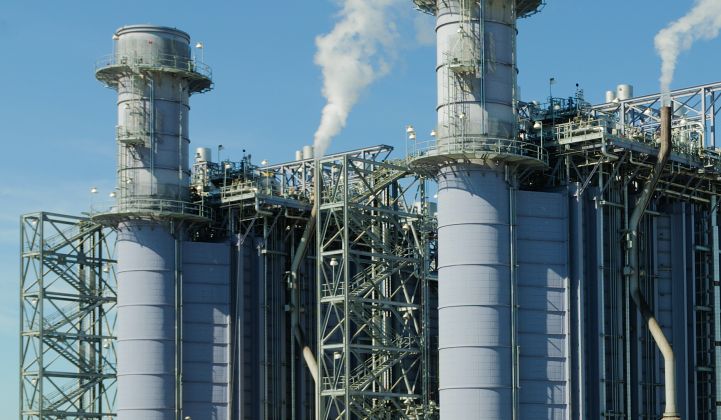California utility regulators approved Pacific Gas & Electric's proposal to build the two largest battery systems in the world.
The 4-1 vote marks a landmark development in California's quest to decarbonize its electrical system by shifting from natural gas to non-emitting sources for flexible power.
"Not only will this help California integrate solar and reduce the need to ramp up polluting gas plants in the late afternoon, but it will also provide local reliability needs in an area that is currently highly reliant on gas-fired generation," said Matt Vespa, staff attorney at Earthjustice, in an email Thursday. "We are getting multiple benefits, pushing gas off the system, and moving a step closer to a decarbonized grid."
The vote followed from the California Public Utilities Commission's January decision to reject out-of-market payments to three aging Calpine gas plants for their grid reliability services. Instead, the CPUC asked PG&E to procure new energy storage, believing that would provide a better deal for ratepayers.
PG&E came back in July with an ambitious proposal: four projects, totaling 567.5 megawatts/2,270 megawatt-hours, to go into the transmission-constrained Moss Landing area south of the San Francisco Bay.
The portfolio includes a 300-megawatt/1,200-megawatt-hour system that Vistra Energy would build in an existing power plant owned by its subsidiary Dynegy, as well as a 182.5-megawatt/730-megawatt-hour Tesla system that PG&E would own at a substation nearby.
For the clean energy industry, these projects would be the largest proof of concept yet that a grid can abandon existing gas infrastructure and meet its needs with renewables and flexible energy storage. But no major grid investment is quite so simple.
This proposal drew opposition from an unusual coalition (which I covered in detail for GTM Squared subscribers here): the ratepayer advocate, gas generator Calpine (whose request for payment launched the whole saga), and the California Direct Access Customer Coalition and California Community Choice Association.
They argued the investment is a bad use of ratepayer funds. A crucial development buoyed their case: grid operator CAISO approved a $14 million transmission upgrade that will alleviate the local capacity stress for 2019. With that option, paying for the hugest battery procurement in history became a heavier lift.
The ratepayer advocate's job is to keep utility bills low for the public. Not so long ago, that meant taking aim at utility requests to build big new gas plants at ratepayers' expense. These days, California utilities' big projects have become clean energy projects, and they have environmentalists on their side.
At issue is how to weigh the socialized costs of new grid infrastructure against the benefits of cleaner air, reduced carbon emissions and progress toward the legislative goals of a carbon-free electricity system and large-scale emissions reductions.
This tension played out earlier this year when the ratepayer advocate almost scuttled the second Preferred Resources Pilot, awarded two years ago to try out new distributed grid innovations. Regulators overrode those objections and approved ratepayer funding for the pilot, as they did Thursday with the Moss Landing batteries.
With approval secured, it is now up to PG&E and the participating companies to deliver on their projects. Then the real work sets in: proving that these massive battery plants can balance the local grid, clearing the way for more gas plant retirements. Gas plants can run as long as the gas keeps flowing; batteries run out of charge, which could be a problem in a prolonged heatwave.
The experience at Moss Landing will provide vital data about how the gas-to-storage transition works in practice.




